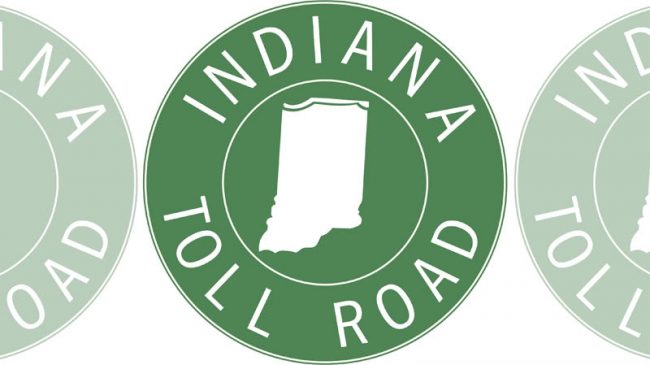This morning, the company that won a 75-year concession to operate, maintain, and improve the 157-mile Indiana Toll Road filed for a Chapter 11 bankruptcy proceeding.
Critics of the original 2005 Indiana Toll Road transaction are cheering, hoping that this event will derail the growing trend of private investors moving into the U.S. highway sector. That, fortunately, is not likely to happen.
In the original deal, Indiana Gov. Mitch Daniels persuaded the legislature to outsource the management and operation of the state’s most important highway (which is also I-80/90) to a competitively selected consortium for 75 years. The winning bidder would be the team that offered 75 years’ worth of lease payments in an up-front lump sum. The highest bid was submitted by a joint venture of Spanish toll road company Cintra and Australian investment bank Macquarie, bidding a whopping $3.8 billion, far more than anyone expected.
What went wrong that led to today’s Chapter 11 filing?
Two factors were responsible. First, the company based their financing model on an overly optimistic projection of traffic and toll revenue. Second, they also used a very aggressive financing structure, requiring large debt service payments toward the end of the first decade of the 75-year agreement. The Great Recession torpedoed both assumptions, making it impossible to meet the upcoming debt service payments.
The Indiana Toll Road Concession Company (50% owned by Cintra, 50% by two Macquarie funds) has reached an agreement with its principal creditors on a “pre-packaged” Chapter 11 process. They will seek a new operator to take over the remainder of the 75-year concession agreement (if the Indiana Finance Authority approves). If that effort is not successful, the Indiana Toll Road Concession Company (ITRCC) will complete a financial reorganization that will recapitalize ITRCC with a reduced debt structure. Typically in such reorganizations, the company loses all or nearly all of its equity investment, and the creditors accept something less than 100 cents on the dollar.
What this means for customers of the Indiana Toll Road is business as usual. There will be no interruption of service, no increases in toll rates, and no change in the performance requirements embedded in the 75-year concession agreement, which will remain in force under either restructuring outcome. What it means for taxpayers is no impact; there will not be any taxpayer bailout.
Despite ITRCC’s current troubles, Indiana comes out of this deal in great shape. The $3.8 billion worth of up-front lease payments was used to pay for a 10-year highway capital improvement program that proved very popular. Despite early critics’ predictions that Gov. Daniels would pay a high political price for “selling the family silver,” he was re-elected by a wide margin to a second and final term.
Indiana Toll Road customers today have a much better highway than before. Since taking over in 2006, ITRCC has invested $458 million in the toll road, adding new lanes, rehabilitating bridges and pavement, and implementing a new electronic tolling system (part of the 15-state E-ZPass system) to replace the former cash tolls. The Toll Road has high ratings on bridge sufficiency and pavement condition, consistent with requirements in the concession agreement. A 2012 opinion survey found that 76% of the Toll Road’s customers have a favorable impression of the highway.
It’s amusing to re-read the claims of critics of the concession at the time of the transfer to ITRCC. Mother Jones featured the lease in a major story critical of long-term concessions, called “The Highwaymen.” The authors quoted several critics saying that Indiana had let the tollway go at a “fire sale price,” and implied that ITRCC would make an enormous return on its investment, thanks to ever-higher toll rates (ignoring the large expenses involved in operations and maintenance, improvements over 75 years, and likely reconstruction/replacement of all the pavement-let alone debt service costs).
Rep. Peter DeFazio (D, OR) called the deal “a license to print money.” He and the late Rep. James Oberstar (D, MN) even called for legislation to outlaw the leasing of existing highways-which, fortunately, went nowhere.
So what can we learn from this latest chapter in the ITR saga?
- First and foremost, this event demonstrates once again that in long-term toll concessions, taxpayers are protected. The risk of construction/reconstruction cost overruns and of inadequate traffic and revenue are shifted from taxpayers to sophisticated investors.
- Second, even though the Indiana Toll Road was an existing highway, it has been measurably improved during its first decade under private management and operation-it definitely has not been run-down via foolish cost-cutting as ITRCC encountered financial problems.
- Third, infrastructure investment funds are not fleeing from long-term highway concessions. The impending bankruptcy filing of ITRCC has been rumored for the past year, yet the Florida Department of Transportation had no problem this summer in getting the financing for its $2.3 billion concession for the Orlando I-4 reconstruction and modernization (adding four express toll lanes) project.
Finally, I suggest a policy lesson. Even though Indiana used its $3.8 billion up-front payment to fully fund a 10-year highway improvement program, I advise state DOTs not to base competitions on maximizing such up-front windfalls. For one thing, they may well lead the winning bidder to take on excessive debt that jeopardizes its ability to run the project as a business. Even more important, a long-term concession is intended to be a true public-private partnership over many decades. Having the concession company make monthly or annual lease payments provides both parties with ongoing incentives to work together to make their partnership succeed. It also avoids the unfairness of charging higher tolls to toll road users to pay for highways elsewhere in the state (which should be paid for by their own users).

